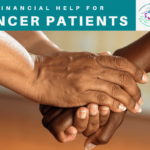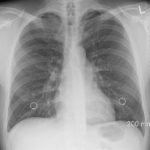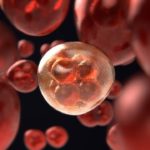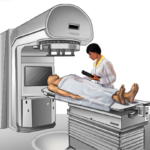Once the Doctor has diagnosed with breast cancer, you might be thinking about the causes of the disease. Unfortunately, it is tough to know the exact cause of the issue. Most breast cancer survivors will never be able to identify the exact cause of their problems. The only thing we understand is that this problem happens when the cell’s DNA is damaged.
Every year in the 1st week of October, you may notice lots of female tagged with pink ribbons. It is because 1-31st October is considered to be Breast Cancer Awareness Month. Health campaigns are held internationally promoting better understanding and knowledge of the disease and raising funds to support breast cancer research into the specifics of diagnosis, cause, treatment, cure, and prevention.
Researchers say that 1 in 8 women across the globe is diagnosed with breast cancer in their whole life. Sharing some vital information about this clinical disease is very critical. Timely diagnosis and treatment save a life; millions of breast cancer survivors have already proved it.
Below treated are answers to the 5 questions a person might be too afraid to ask a practitioner.
Question 1: What exactly breast cancer is?
The disease occurs when the abnormal cells present in the breast grows and overruns the healthy cells. Though it begins in the breast, the cells can also affect other areas of the body by metastasizing over the areas through blood or lymph vessels.
Like many women, a female might also think that there is only one type of breast cancer. Well, it entirely depends on the type of cells in the breast that has caused cancer. The issue can be a diagnosis in three areas; Lobules, Ducts, and Connective Tissue. Most breast cancer occurs in the lobules or ducts. The two most common types of this disease are Invasive Ductal Carcinoma also identified as Infiltrating Ductal Carcinoma that occurs when the cancer cells grow in a milk duct and invade fibrous or fatty tissues outside the duct; and Invasive Lobular Carcinoma that occurs when the cancer cells spread from the lobules to other tissues nearby.
Other types of breast cancer are Paget’s disease, Mucinous, Medullary, and Inflammatory breast cancer. Besides, DCIS (Ductal Carcinoma in Situ) is a sort of breast disease that can also lead to breast cancer.
Question 2: What is the genetic risk for breast cancer?
The disease of breast cancer develops when the cell’s DNA is damaged. However, what is the reason behind it? Well, the reason could be environmental or genetic; or both in many cases. Let us here look at some of the established genetic factors of breast cancer.
- Most women diagnosed with invasive cancer after 55 years of age.
- On ratio women-sufferers of breast cancer are far more than men.
- There are at the highest risk of developing the disease if someone in the family was diagnosed. Moreover, the risk increases if the person was diagnosed with breast cancer before the age of 50.
- If you have identified breast cancer in one breast, it can get spread into the other breast.
- Early menstruation, i.e. before the age of 12 years, late menopause, i.e. after 55 years, having a child at an older age or never gave birth; these are also some of the causes that can increase the risk.
Question 3: What is the natural risk for breast cancer?
Various other risk factors are within control. Being genetically prone to breast cancer, it becomes vitally important to take appropriate measures to prevent the effects of this life-related risk.
- Physical activities: Being inactive has higher chances of developing diseases like breast cancer.
- Unhealthy diet: Nutriment lacking vegetables and fruits are unhealthy to consume daily since it can develop issues like cancer.
- Obesity or excess weight: You can be at a higher risk if you are over weighted or have gone through menopause.
- Excessive alcohol intake: Alcohol consumption is also at a greater risk of developing cancer cells.
Moreover, having gone through the chest radiation treatment in the past before the 30 years of age or having had a combined hormone replacement therapy can also be the risk measure for researching out the best breast cancer diagnosis and treatment in California. As a piece of important advice, it is good to have a word with your medical practitioner and discuss your risk measures. This will help you develop an appropriate personalized plan for preventing and detecting breast cancer.
Question 4: What are the preventative measures to take for breast cancer?
Indeed, there are plenty of things which can be work on to reduce the risk of developing breast cancer. As recommended one should-
- Stay strong with a healthy weight.
- Follow a healthy and low-fat diet.
- Spare at least 75 to 150 minutes on physical activities
- Most importantly avoid alcohol
Also, women who breastfeed their infant for several months as researches say are at a lesser risk of developing breast cancer.
Question 5: What are the right steps to detect breast cancer at an early stage?
In some cases, the disease is diagnosed after the symptoms appear. Many women suffered the issues had no symptoms. So, regular screening is crucially important to find breast cancer early. The right type of screening suitable for your medical problem will be dependent on the practitioner and the organization treating you. It is important to have an in-person discussion with the practitioner to decide on the right screening practice that can work the best for you.
Women who don’t have any personal or family history of breast cancer, or a genetic mutation that increases the risk, and has never had radiation therapy before the 30 years of age are said to be at average risk. Women between-
- 40 and 44 years of age are advised to start screening yearly with a mammogram.
- 45 and 54 years of age may be recommended mammograms every year.
55 and above can get the choice of switching mammograms once every two years or every year. - Screening is to be continued until the patient is back to her healthy life expecting the women to live at least 10 more years.
Women, in general, at the beginning 30s, who are at high risk for the disease, are recommended to do MRI and mammogram year after year. However, the recommendation is based on the person’s preferences and personal circumstances that include-
- Women who are at a lifetime risk of approx 20 to 25% or more. The risk assessment is more or less based on family history.
- Women who have been recognized BRCA1 or BRCA2 based on genetic testing.
- Women having a relative with first-degree BRCA1 or BRCA2 genetic mutation, and never had genetic testing.
Women who have had radiation therapy in the past between 10 and 30 years of age. - Women who are suffering from Li-Fraumeni syndrome, Bannayan-Riley-Ruvalcaba syndrome, or Cowden syndrome. Even women who are having relatives suffering from this syndrome at first-degree.
For any more queries, you may have about screenings of breast cancer, reach out to a certified practitioner that can offer you the best women’s health services consisting of clinical breast exams as well as mammogram referrals. Also, give other women a healthy life by donating to the CRL Foundation. By doing this you are helping practitioners to achieve health justice to every single woman at risk of or are living with breast cancer. Call us today for more questions or to schedule an appointment.











